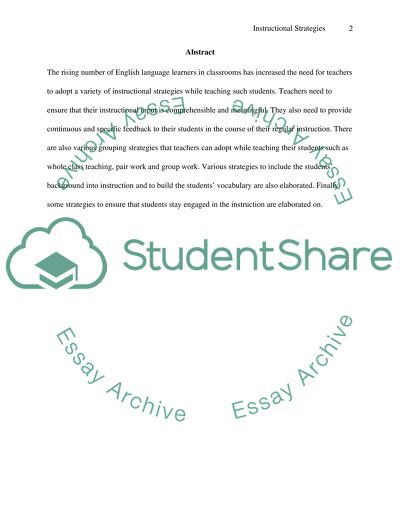Cite this document
(“Instructional Strategies for English Language Learners Classrooms Essay - 1”, n.d.)
Instructional Strategies for English Language Learners Classrooms Essay - 1. Retrieved from https://studentshare.org/education/1521396-instructional-strategies-for-ell-classrooms-essay
Instructional Strategies for English Language Learners Classrooms Essay - 1. Retrieved from https://studentshare.org/education/1521396-instructional-strategies-for-ell-classrooms-essay
(Instructional Strategies for English Language Learners Classrooms Essay - 1)
Instructional Strategies for English Language Learners Classrooms Essay - 1. https://studentshare.org/education/1521396-instructional-strategies-for-ell-classrooms-essay.
Instructional Strategies for English Language Learners Classrooms Essay - 1. https://studentshare.org/education/1521396-instructional-strategies-for-ell-classrooms-essay.
“Instructional Strategies for English Language Learners Classrooms Essay - 1”, n.d. https://studentshare.org/education/1521396-instructional-strategies-for-ell-classrooms-essay.


